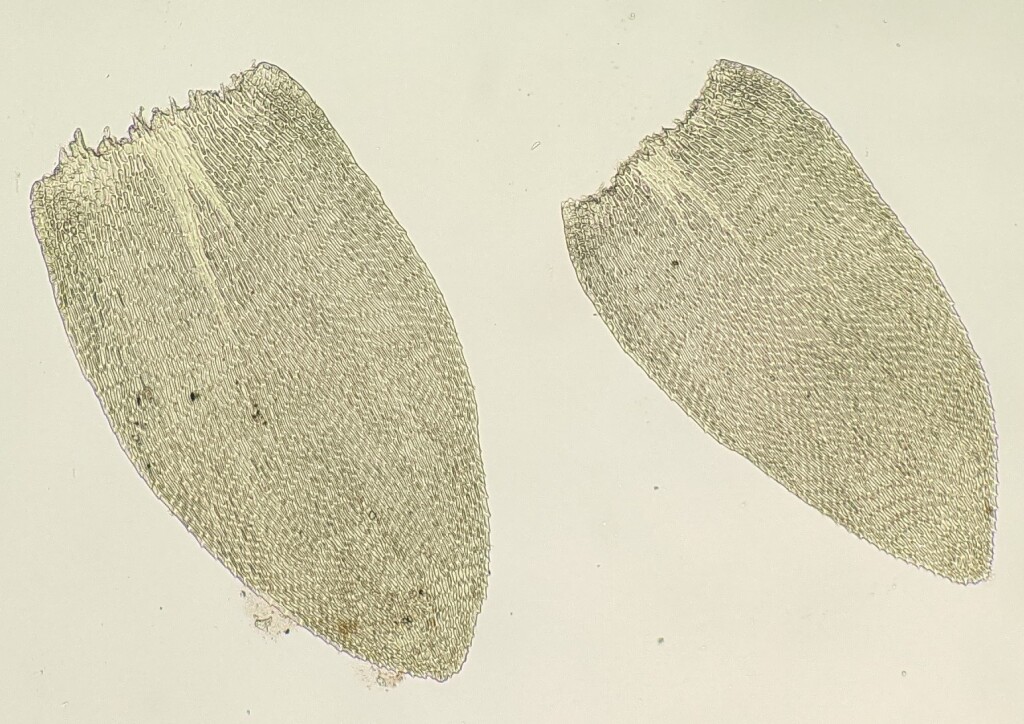Fallaciella gracilis
(Hook.f. & Wilson) H.A.CrumClosely appressed mats or wefts on rocks and tree trunks or shrub stems. Stems usually creeping, to c. 15 mm long, without a central strand, with pseudoparaphyllia. Leaves erect-spreading when moist, usually homomallous, ovate to elliptic, weakly concave when moist, scarcely altered when dry; apex obtuse to widely acute; costa double, extending 1/4–1/2 leaf length; margins serrulate toward apices, plane or sometimes weakly incurved toward apices and revolute toward base; midlaminal cells short-linear to linear, (18–) 24–36 μm long, 4–6 μm wide, prorate to prorate-papillose; laminal cells at apices shorter, rhombic or ±irregular, 9–30 μm long, 6–8 μm wide. Stem leaves 0.75–1.1 mm long, 0.5–0.6 mm wide; alar cells ±quadrate, 4–25 μm long, 6–8 μm wide, pigmented, forming a group c. 6–8 cells wide and extending c. 10 (–13) cells up margin. Branch leaves smaller than stem leaves, 0.45–0.8 mm long, 0.25–0.5 mm wide, with a smaller alar group. Seta 12–20 mm long, red-brown, smooth. Capsule inclined to horizontal, cylindric to oblong-cylindric, straight, 1.5–1.8 mm long. Operculum apiculate or short-rostrate from high conic base, c. 0.35–0.5 mm long.
VVP, GipP, OtP, GGr, NIS, EGL, EGU, WPro, HSF, HNF, OtR, Strz, MonT, HFE, VAlp. Widespread east of Melbourne along the Great Dividing Range and south of it in rainforest and wet-sclerophyll forest, and occasionally along creeks and beside swamps among drier vegetation and extending into the alpine zone. Also in wet forest throughout the Otways and recorded in 1876 from Mount William in the Grampians. Also NSW, ACT and Tas. New Zealand, Chile and Auckland, Campbell and Chatham Islands.
 Spinning
Spinning
